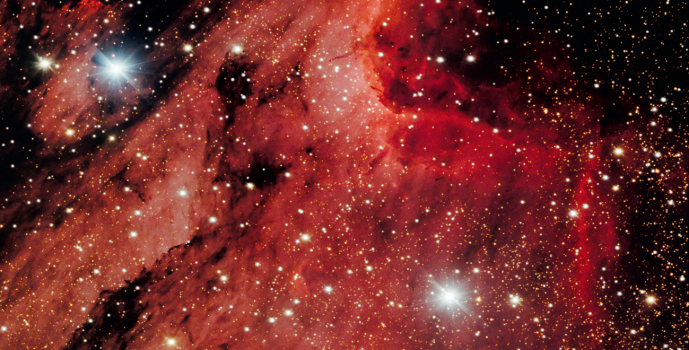The second time I imaged this, I remember the excitement of seeing it myself, from a field near Hinesburg, Vermont, and not from a Hubble image.
Fast forward a couple of months and I’m into guiding, proper focusing, much longer exposures, and really deep-sky objects that are now high enough in the summer sky to get good shots. More importantly, they are also now visible above the tree line in my back yard.
I have a great affection for the “Pelican” which to me looks actually more like a Pterodactyl. It really does look like that. It’s one of those things you can’t unsee! Whenever I picture this region, I see the Pelican appearing to run away from the background of the Milky Way – it looks comical. In space, there really is no such thing as up or down, so images can really be displayed in whatever fashion is most aesthetically pleasing, but… you can’t have the Pelican upside down. That’s for sure! 🙂
I took this image over two nights in April and was actually pleased with the result. The guiding worked and the exposures were about right.
It’s a very interesting area. The red color results from the ionization of interstellar hydrogen gas from a nearby, large, massive star. At the top of the Pelican’s head there is a more dense area, a “star factory” where new stars are born. A small finger of dust ( actually light years long!) has at its a tip, the exotically named Herbig-Haro 555 which shows energetic jets emerging from the dust of a hidden star bursting into life.






